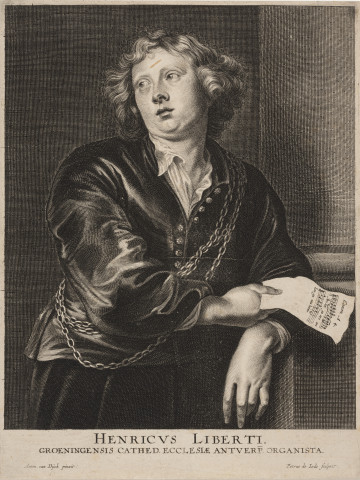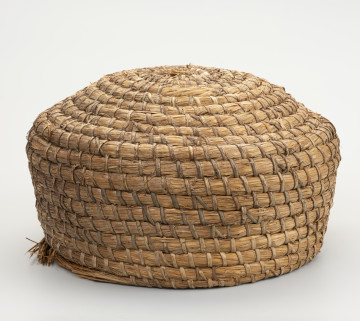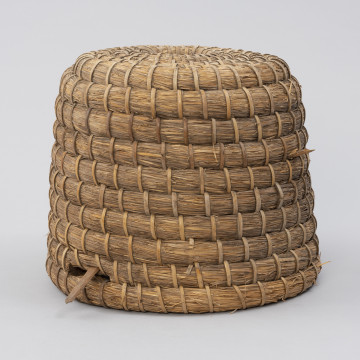
Portrait
circa 1632
National Museum in Szczecin
Part of the collection: Metals
Pair of andirons/ fire dogs. The history of the andiron begins in the middle ages. They were originally long, wrought iron rods with a hook, to hang a cauldron above the fire. In the 14th century this rod was expanded to include a stem running into the fireplace to hold the pieces of wood, and in the 16th century the practical function (holding of logs) was amended by a decorative function. The name, in Polish – wolf – stems from English (fire dog) and French. The most commonly used material for such holders was wrought iron, even though silver and later bronze, frequently gilded, emerged at the end of the 17th century. The andiron form changed along with fashions and styles, from very simple to very decorative ones. The discussed andirons stem from the Potoccy collection from the end of the 18th/ beginning of the 19th centuries. The fire dog is made up of a rectangular hearth resting upon four feet, with the front ones turning into rising rods. The hearth is additionally decorated with a pair of rods terminating in balls. The decorative, bronze part takes the shape of a large rocaille with a putto sitting in the centre in a free posture, almost naked, with a piece of cloth draped around the loins. Field flowers here and there are an additional decoration.
Object type
Metals
Technique
metallurgical
Material
bronze
Owner
Castle Museum in Łańcut
Identification number
Location / status

circa 1632
National Museum in Szczecin

1965
National Museum in Szczecin

1890 — 1910
National Museum in Szczecin
DISCOVER this TOPIC
National Museum in Szczecin
DISCOVER this PATH
Educational path